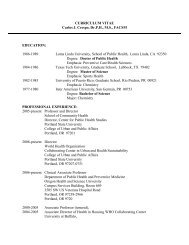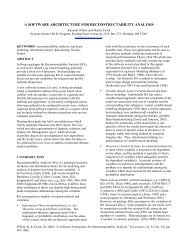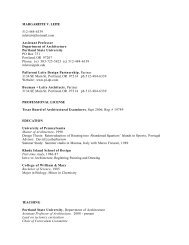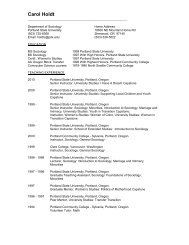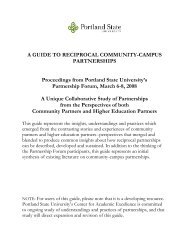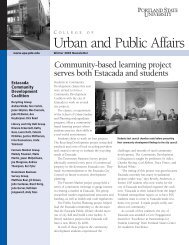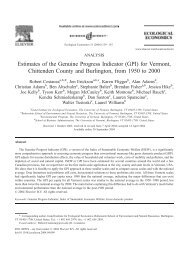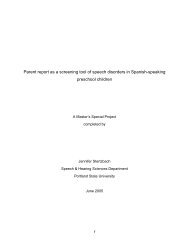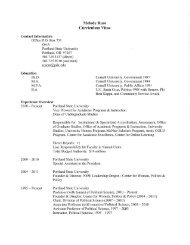Effects of integral stimulation therapy on speech - Portland State ...
Effects of integral stimulation therapy on speech - Portland State ...
Effects of integral stimulation therapy on speech - Portland State ...
You also want an ePaper? Increase the reach of your titles
YUMPU automatically turns print PDFs into web optimized ePapers that Google loves.
execute smooth and accurate <strong>speech</strong>. Few studies have evaluated the efficacy <str<strong>on</strong>g>of</str<strong>on</strong>g> Melodic<br />
Int<strong>on</strong>ati<strong>on</strong> Therapy with CAS. Studies by Helfrich-Miller, (1994) and Krauss and<br />
Galloway (1982) reported that subjects with CAS dem<strong>on</strong>strated increased <strong>speech</strong><br />
intelligibility and fewer articulati<strong>on</strong> errors following treatment with MIT. It is unclear if<br />
MIT was the <strong>on</strong>ly source <str<strong>on</strong>g>of</str<strong>on</strong>g> improved <strong>speech</strong> or whether other treatment methods<br />
employed over the course <str<strong>on</strong>g>of</str<strong>on</strong>g> the study had c<strong>on</strong>tributed to the subjects’ gains.<br />
A third treatment category for the management <str<strong>on</strong>g>of</str<strong>on</strong>g> CAS employs gestural<br />
strategies with the intent <str<strong>on</strong>g>of</str<strong>on</strong>g> aiding the reorganizati<strong>on</strong> <str<strong>on</strong>g>of</str<strong>on</strong>g> <strong>speech</strong> output. Methods include<br />
Adapted Cueing (ACT) (Klick, 1985), Jordan’s Gestures (Hall et al., 1993) and Signed<br />
Target Ph<strong>on</strong>eme (STP) <str<strong>on</strong>g>therapy</str<strong>on</strong>g> (Shelt<strong>on</strong> & Graves, 1985). Gestural methods seek to<br />
dem<strong>on</strong>strate “patterns <str<strong>on</strong>g>of</str<strong>on</strong>g> articulatory movement and manner <str<strong>on</strong>g>of</str<strong>on</strong>g> producti<strong>on</strong>” (Klick, 1985,<br />
p. 256). Several studies report students with CAS exhibited increases in utterance lengths,<br />
c<strong>on</strong>versati<strong>on</strong>al turns, and communicative functi<strong>on</strong>s with their communicative partners<br />
using augmentative and alternative communicati<strong>on</strong> materials and strategies in the form <str<strong>on</strong>g>of</str<strong>on</strong>g><br />
gestures, communicati<strong>on</strong> books, and <strong>speech</strong> generative devices (Bashir, Graham-J<strong>on</strong>es, &<br />
Bostwick, 1984; Culp, 1989; Cumley & Swans<strong>on</strong>, 1999). It has been suggested that<br />
treatment strategies that require a learner to discriminate between symbols and gestures<br />
not physically representative <str<strong>on</strong>g>of</str<strong>on</strong>g> the actual <strong>speech</strong> sound movement can present a<br />
cognitive processing load that may decrease the accuracy <str<strong>on</strong>g>of</str<strong>on</strong>g> <strong>speech</strong> movements (Strand,<br />
1992).<br />
Perhaps the most important c<strong>on</strong>siderati<strong>on</strong> for clinicians choosing treatment<br />
approaches is to create a plan that serves the individual needs and specific<br />
symptomatology <str<strong>on</strong>g>of</str<strong>on</strong>g> the child. Successful approaches target a child’s various cognitive<br />
14



